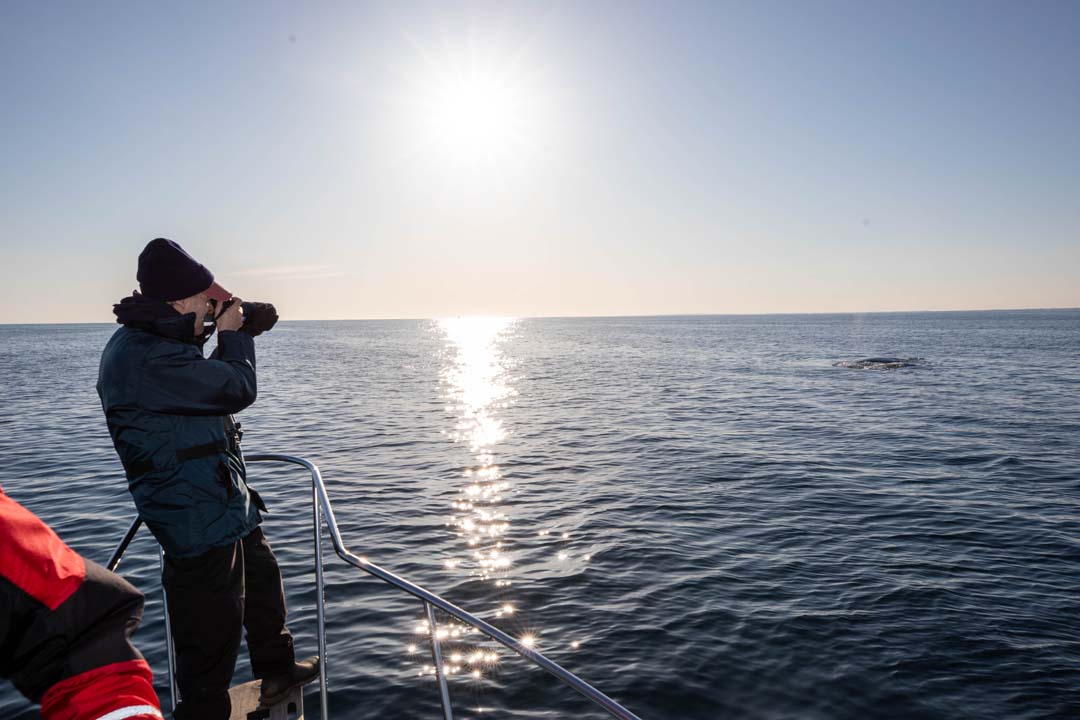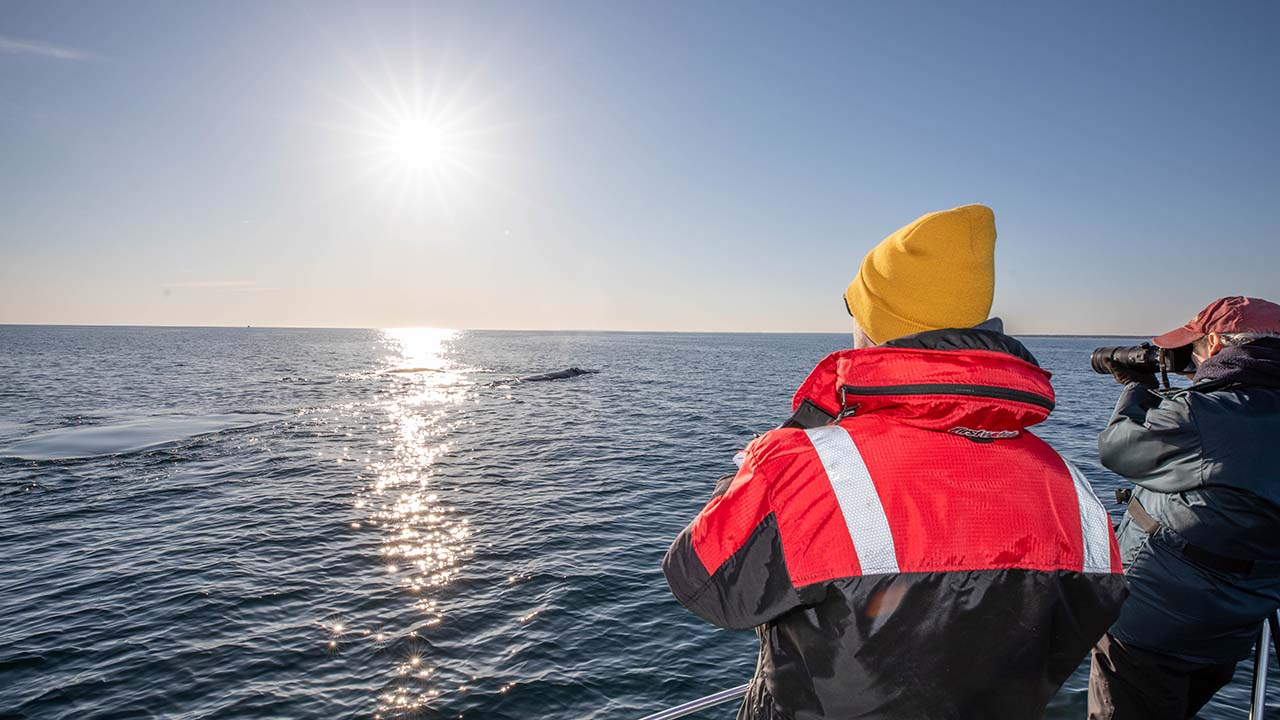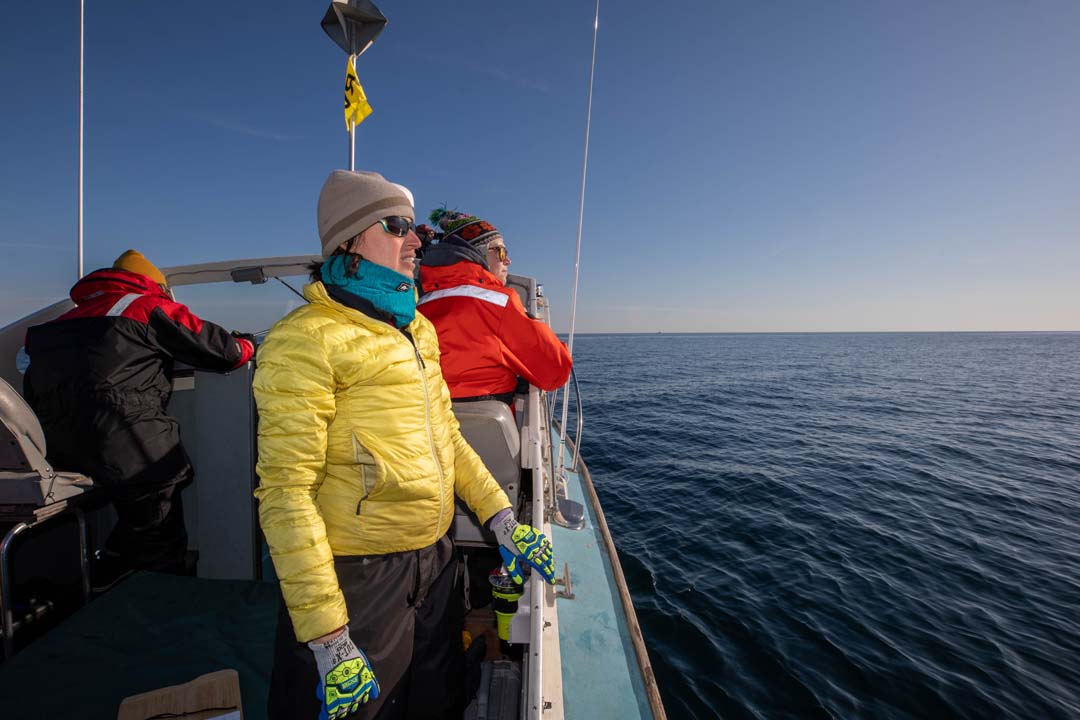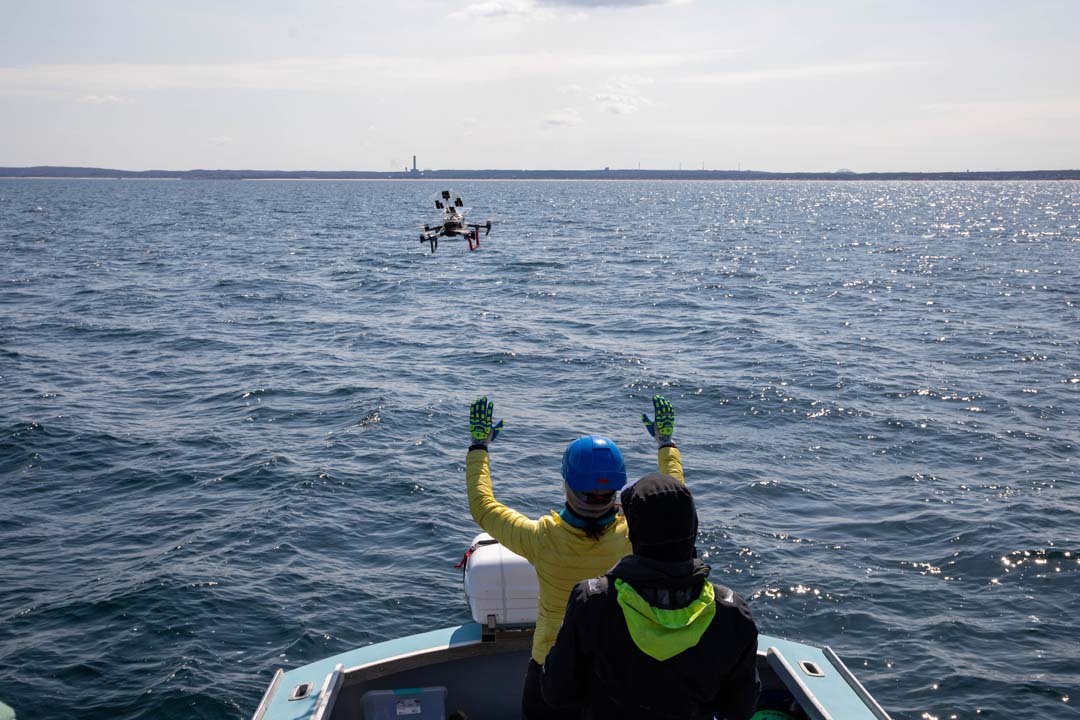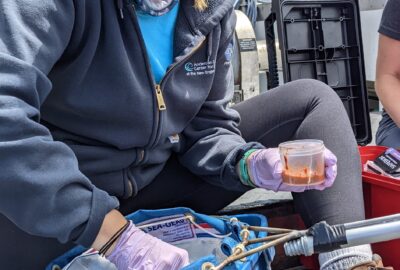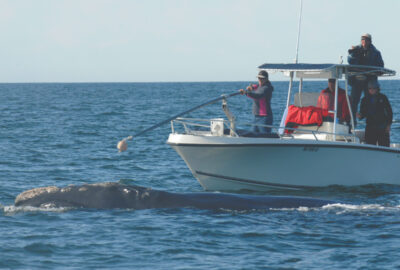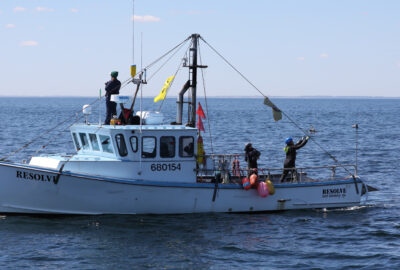A Salute to Our Mighty Research Vessel: Nereid
By New England Aquarium on Monday, June 30, 2025

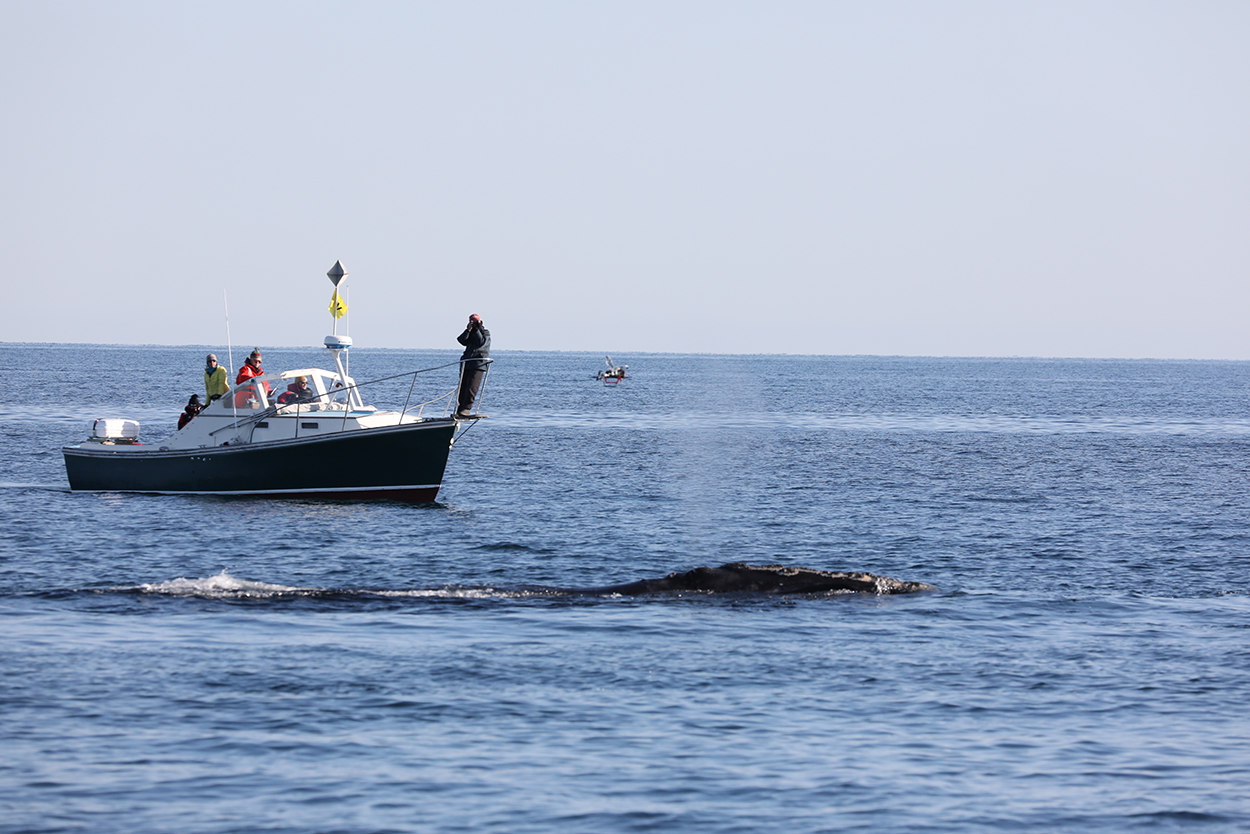
Back on the water again!
We are very excited to share that this April, for the first time since 2020, our beloved research vessel, the Nereid, was back on the water for fieldwork! Nereid has been an essential part of the New England Aquarium and Anderson Cabot Center for Ocean Life right whale research for over 40 years.
Following extensive maintenance this winter, the Nereid was launched on March 27 in Cape Cod Bay. For nine days in April, we conducted fieldwork that included photo-ID surveys, using a drone to collect blow samples and conduct photogrammetry (calibrated images for making body measurements), and recording sounds of whales and noise in the bay. The team took 214 photographs, spotted seven mother-calf pairs, collected biopsy samples from four different whales, collected 40 samples of blow, and more!
Check out some photos from our latest fieldwork season, and read more about the history of Anderson Cabot Center for Ocean Life right whale research aboard the Nereid.
Spring aboard the Nereid
/
By Philip Hamilton
Over the past 40 years, the beautiful and dependable research vessel Nereid has become much more than a means of transportation; she has become a beloved member of our research team. The Nereid, a Dyer 29, was built in 1979 at the Dyer Boat Yard in Warren, Rhode Island. Less than two years later, a kind benefactor donated her to our right whale project. Our team has since recorded 14,000 photographed sightings of the endangered right whale from her decks!
She is relatively small (29 feet), given the distance we travel from port (40-plus miles per voyage), but she is heavy and seaworthy and very well suited for the challenging sea states that the dramatic Bay of Fundy tidal range can lead to. In fact, we have managed some very rough seas together—like the time two right whales were caught in a fishing weir on the west side of Grand Manan Island. The seas were too rough for others to respond, but we knew the Nereid could make the journey, so off went the Nereid and her intrepid crew. Because the waves were steep and close together as the wind was against the tide, we had to motor more slowly through these large seas. By the time we arrived, the whales had escaped, but the event remained a memorable one.

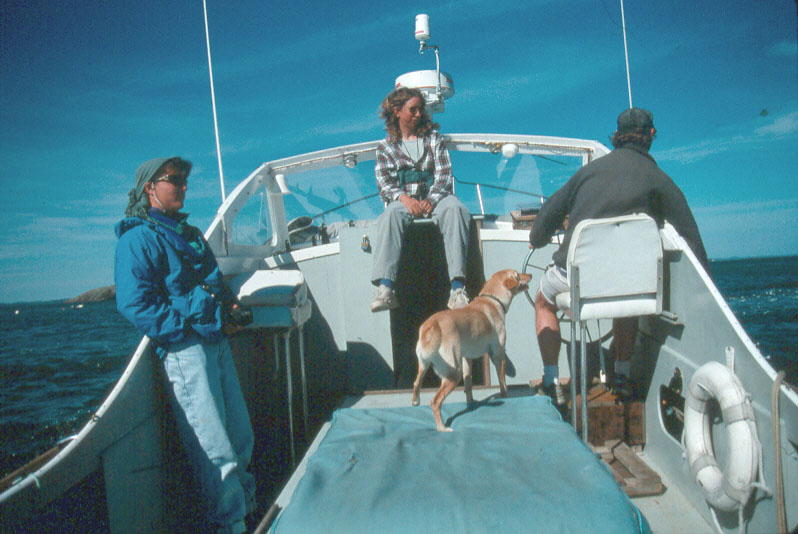
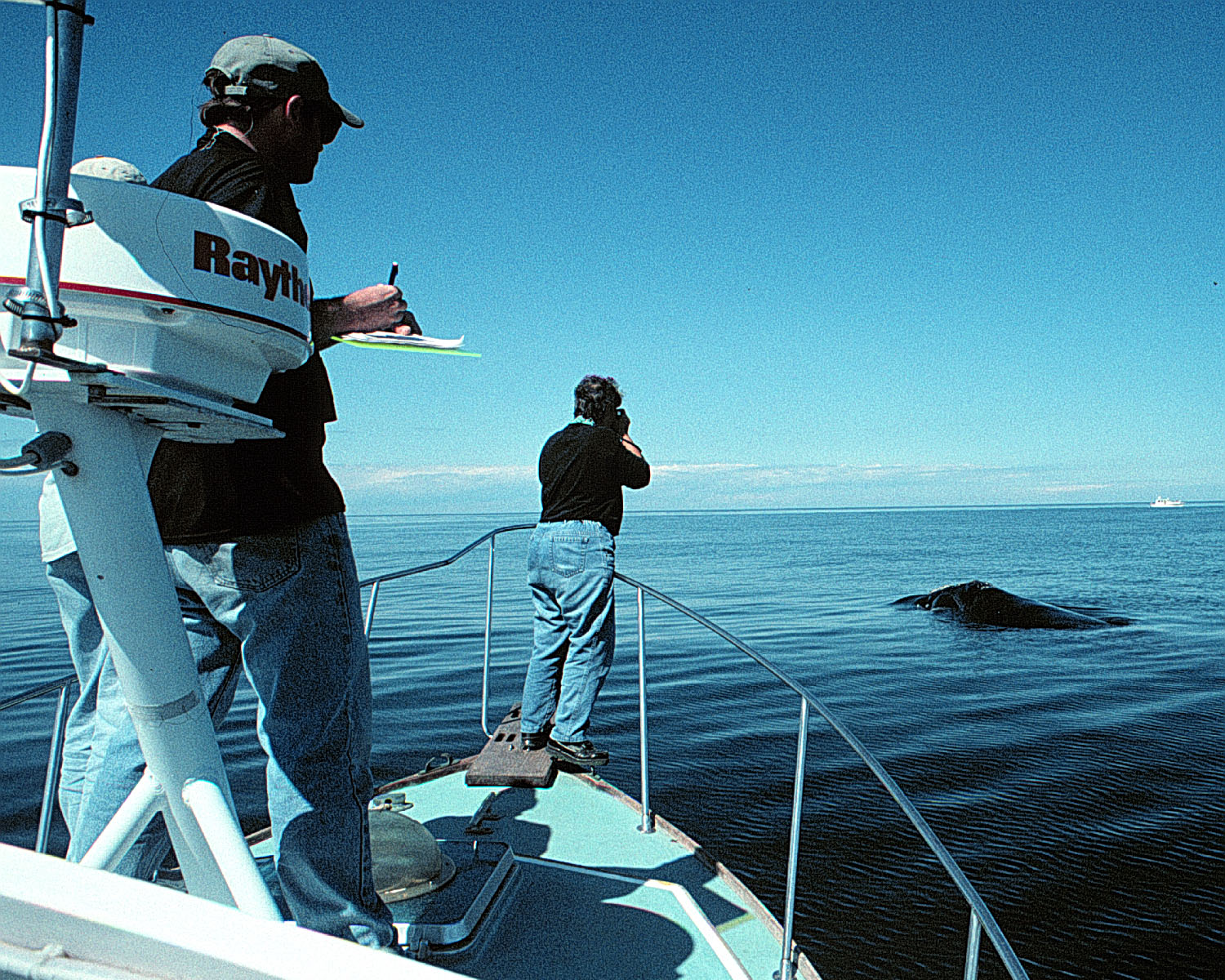
Throughout the decades, we’ve dealt with a wide array of breakdowns and many of us have become makeshift diesel mechanics, which has proved challenging and satisfying in equal measure. We’ve managed such challenges as hull damage after she hit a ledge off Brier Island, the loss of our propeller due to a bent shaft, broken steering cables, and a cracked turbocharger that caused the cabin to fill up with thick black smoke some 25 miles from port. We’ve learned the process of how to bleed fuel lines and restart the engine after it gets air locked (air can get sucked into the engine if the fuel tanks get low in heavy seas; air in the fuel lines causes a diesel engine to stall). So it’s fair to say we know every inch of this boat and have faced a wide variety of seafaring challenges.
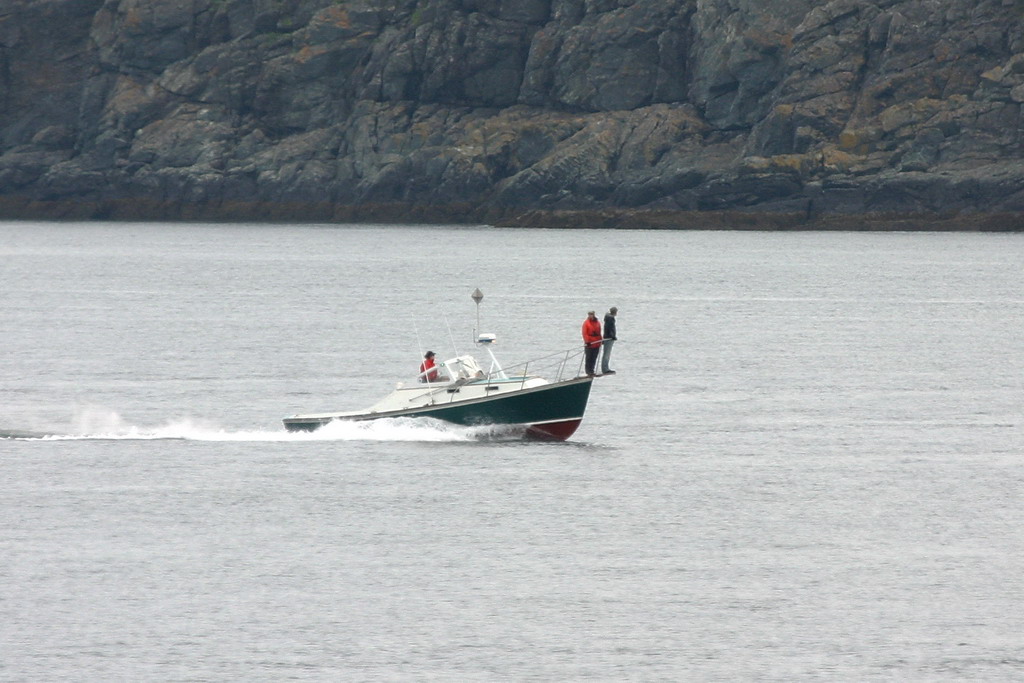

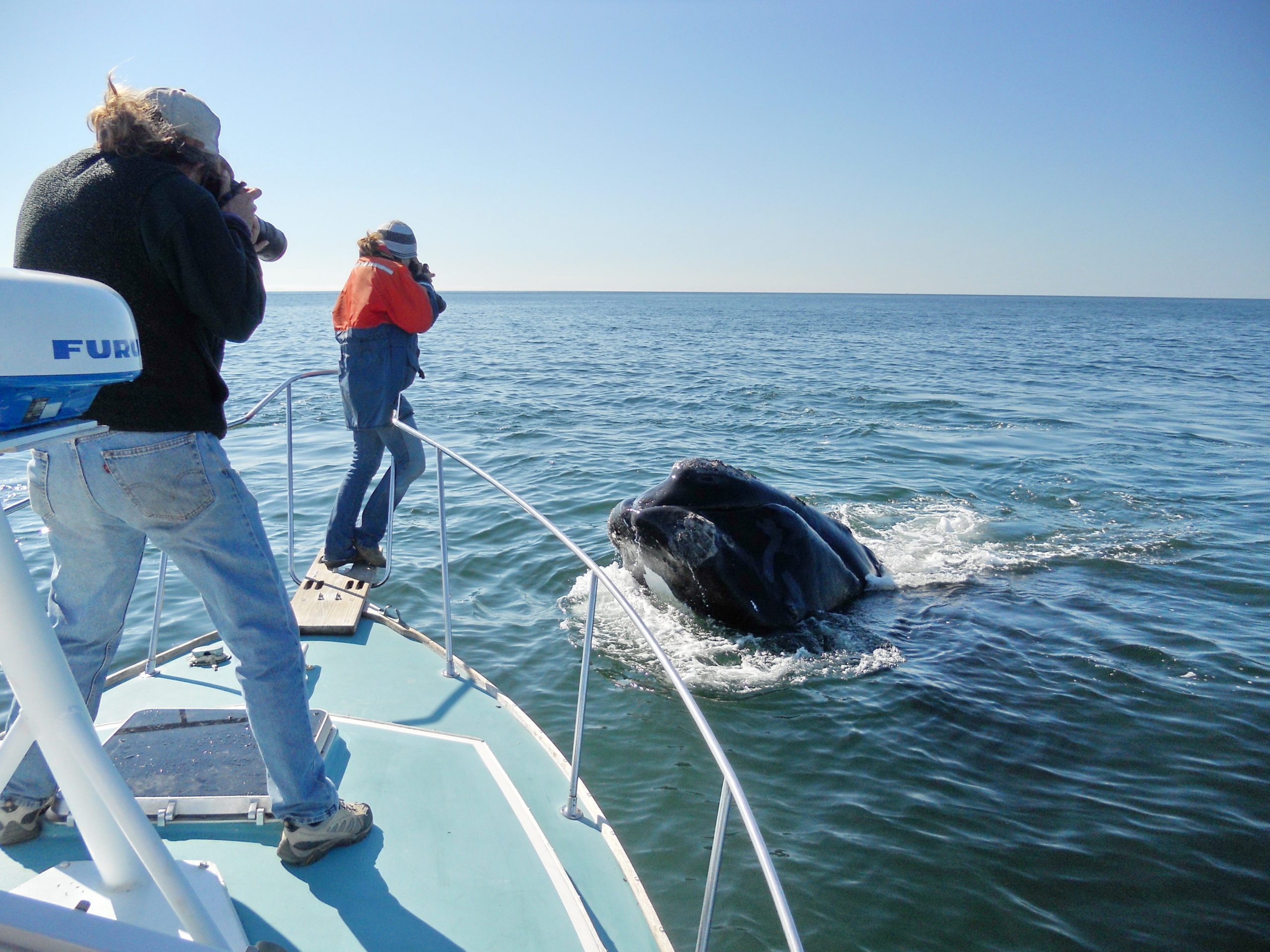
Our team is often asked if the right whales know us or recognize us after all these years. The answer is almost certainly no, since all of their senses are geared towards the environment below the ocean’s surface. But we have been incredibly fortunate to have a sturdy boat to witness right whales in this incredibly dynamic habitat over these past 40 years.
Thank you, good friend, for your dependable partnership and steadfast service.

– Philip Hamilton
Surveys done aboard the Nereid are made possible in part by the generosity of Irving Oil, lead sponsor of the New England Aquarium’s Anderon Cabot Center for Ocean Life North Atlantic Right Whale Research Program since 1998.

